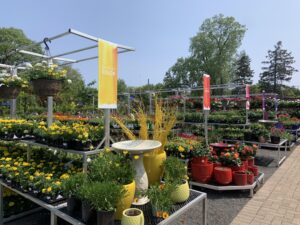
Innovative Ideas: Creating a team culture
Being in the garden center industry for the better part of 30 years, it’s amazing to look back and see all of the changes we’ve been through — how new varieties have been developed to meet the needs of new housing developments, the processes of gathering and disseminating information, and so much more.
Along with all those changes comes the challenge of staffing. When I first started in this industry, many garden centers were family owned and operated, with those family members involved in all aspects of the business. Additional “filler” positions would be covered primarily by high school or college students as summer jobs, but as interest in afterschool programs, summer sports and other activities grew, fewer students became available.
Adults who might have taken on these jobs are now harder to find, and many want more permanent, full-time positions with benefits and higher pay. For areas where the weather is warmer and the growing season is longer, this may not be as much of an issue. But for those of us in northern states, it becomes very difficult to navigate.
Here in Michigan, our season runs from April 1 through October. Supplementing the garden center season with Christmas has helped keep us busy through December, but that doesn’t ease the staffing situation. We need to decrease our number of outside team members by the middle to end of October — while keeping them happy enough to want to come back in the spring. Having to retrain new staff each season is not only a pain, but it creates a culture of constant upheaval and stresses out management, who feel each season could be compared to Groundhog Day.
So how have we been able to retain the seasonal employees we have? Creating a team culture has been integral. Keeping open communication has given them a sense of skin in the game. Morning meetings are a great way to keep everyone informed, including management, as these seasonal employees are the front line. They know what plants are moving quicker than others, how the stock looks and what people are asking for. So, including them in the ordering process or how things are displayed and set up not only gives us great insights, but also gives them a sense that their input is important.
Remembering these team members have a passion for the business is also important. If they see a cool plant they say they would like to grow in their garden, we’ll give them one to take home and trial. Providing lunch for those crazy spring Saturdays when everyone is working nonstop is a nice way to take care of them as well.
As for hiring seasonal, much-needed staff members, we have begun looking to the retirement community. People retiring at 65 are still very much active these days and are seeking something they enjoy to keep them moving. They want to be needed and, frankly, they have a tremendous work ethic. Right now, five of my 11 core team are “retired.” They are all either previous customers or lifelong gardeners who want to be part of this type of business.
For our seasonal “filler” staff, we are still able to fill those roles with students and even some teachers. I reach out to our local National FFA Organization (formerly Future Farmers of America) and high schools with some sort of agriculture courses. Regular customers are also great at recommending kids they know who want to work.
Staffing takes more “out of the box” thinking now than it used to. Keeping the hierarchy structure is important. The team needs to know who to go to in a pinch. But giving the team a sense of ownership and importance will, ultimately, give everyone a breather — especially management.
As a manager, it can often feel like everything is on your shoulders. Being able to share and include team members in the processes is essential to creating that culture. I often have to remind myself of that. It is not easy to not micromanage; you have an idea and you want it done.
I’ll leave you with one of my favorite quotes from Marcus Lemonis: “People will work for recognition and opportunity more than they’ll work for anything else.”
For an enhanced reading experience, view this article in our digital edition.


















 Videos
Videos





